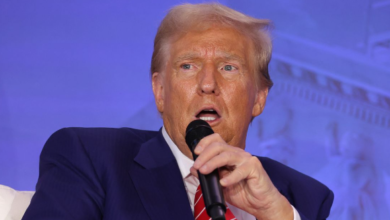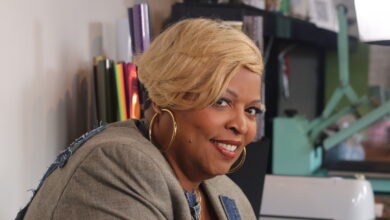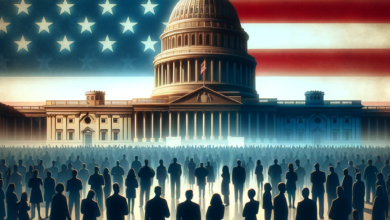3 key facts you may have missed in history class : NPR


A U-2 spy photo shows a medium-range ballistic missile base in San Cristobal, Cuba, with labels detailing various parts of the base in October 1962.
Getty Images
hide caption
toggle caption
Getty Images

A U-2 spy photo shows a medium-range ballistic missile base in San Cristobal, Cuba, with labels detailing various parts of the base in October 1962.
Getty Images
When President Biden compared Russia’s nuclear threat against Ukraine to the 1962 Cuban missile crisis, it highlighted just how much that Cold War showdown continues to shape our collective psyche.
Although Biden’s remarks earlier this month about the “prospect of Armageddon” have been labeled alarming by some and alarmist by others, they emphasize that the stakes in any such conflict between nuclear-armed rivals have not changed since the infamous “13 days” of the crisis.
“We came really close to nuclear catastrophe,” says Fredrik Logevall, a Harvard history professor and author of JFK: Coming of Age in the American Century, 1917-1956.
The crisis began on the morning of Oct. 16, 1962. President John F. Kennedy was shown photos taken by a U-2 spy plane indicating Soviet ballistic sites under construction on the island of Cuba. Once operational, he was informed, they could be used to launch a nuclear strike on the U.S. mainland virtually without warning.
The first of a series of meetings of top advisers and Cabinet officials was quickly convened, including the president’s brother and close confidant, Attorney General Robert F. Kennedy.
The group ultimately settled on a naval quarantine, or blockade, of Cuba to force Soviet Premier Nikita Khrushchev to remove the missiles. Ultimately, Khrushchev received an assurance that the U.S. would not invade Cuba and, in a deal that remained secret for a quarter century, the U.S. also promised to remove its missiles from Turkey.
In the 60 years since the Cuban missile crisis, new information has come out that sheds light on the events of October 1962. Here are three key things that you may have missed in history class:
A Soviet submarine officer may have prevented World War III
Saturday, Oct. 27, 1962, “was not only the most dangerous moment of the Cold War,” Arthur M. Schlesinger Jr., a senior Kennedy adviser, has written. “It was the most dangerous moment in human history.”

B-59 near Cuba with a U.S. Navy helicopter circling above, circa Oct. 27, 1962.
U.S. Navy
hide caption
toggle caption
U.S. Navy

B-59 near Cuba with a U.S. Navy helicopter circling above, circa Oct. 27, 1962.
U.S. Navy
On that day, a U-2 spy plane taking reconnaissance photos was shot down by a surface-to-air missile over Cuba. It had been 18 months since the failed Bay of Pigs mission, and Cuban leader Fidel Castro was convinced that the U.S. would try to invade again. One day earlier, he had written a letter to Khrushchev urging him to launch a preemptive nuclear strike before U.S. troops could land on Cuban beaches.
Meanwhile, despite signs that the Soviets were honoring the U.S.-imposed blockade, there was “extraordinary tension on the seas between captains on their respective sides,” Logevall says.
In the North Atlantic, U.S. Navy destroyers were pursuing a Soviet submarine to force it to the surface as part of the blockade. To avoid an escalation of the conflict, the Navy used training depth charges designed to rattle the submarine rather than damage it.
What the U.S. did not know at the time was that Soviet subs were carrying nuclear-tipped torpedoes. The crew of the targeted B-59 sub had lost contact with Moscow and was unaware of the blockade.
The submarine’s captain mistook the Navy’s provocation as a sign that war had broken out. He wanted to retaliate with a torpedo strike but needed two other senior officers to concur. Vasili Alexandrovich Arkhipov refused. He managed to talk the captain down, and the torpedo was never fired.
“There’s no doubt that the issue with the submarine is an absolutely terrifying one,” says Max Hastings, a historian and author whose latest book, The Abyss: Nuclear Crisis Cuba 1962, is set for release this week. “They didn’t even know that those submarines were armed with nuclear torpedoes.”
In 2002, Thomas Blanton, director of the nonprofit National Security Archive, told The Boston Globe, ”The lesson from this is that a guy called Vasili Arkhipov saved the world.”
Kennedy and Khrushchev forged a politically fraught secret deal
During the Cuban missile crisis, Kennedy, stung by bad advice from the Joint Chiefs of Staff in the lead-up to the April 1961 Bay of Pigs fiasco, was under pressure to authorize airstrikes against the Soviet missile sites and to launch a full-scale invasion of Cuba.

President John F. Kennedy makes his dramatic television broadcast to announce a blockade of Cuba on Oct. 22, 1962.
Keystone/Getty Images
hide caption
toggle caption
Keystone/Getty Images

President John F. Kennedy makes his dramatic television broadcast to announce a blockade of Cuba on Oct. 22, 1962.
Keystone/Getty Images
The president was eager not to show weakness in the face of what the U.S. viewed as Soviet aggression, but he wasn’t willing to risk nuclear war if there was any chance of avoiding it.
In messages exchanged between the two leaders, Kennedy agreed not to invade Cuba and Khrushchev said he would remove the missiles from Cuba. But in a famous letter to Kennedy, Khrushchev also demanded that American Jupiter missiles be removed from Turkey.
To Khrushchev, the Jupiters on his own doorstep were a provocation. He saw putting his own missiles in Cuba as rebalancing the status quo.
Well before the crisis, Kennedy had actually wanted to remove the missiles because “the Pentagon told him that they were obsolete and they didn’t really add anything to American security,” explains Hastings.
But the Turks, who saw the missiles as a guarantor of their own security, had balked.

President John F. Kennedy and Soviet leader Nikita Khrushchev head to their first meeting on June 3, 1961, at the start of the East-West talks in Vienna, the year before the Cuban missile crisis.
Interfoto/AFP via Getty Images
hide caption
toggle caption
Interfoto/AFP via Getty Images

President John F. Kennedy and Soviet leader Nikita Khrushchev head to their first meeting on June 3, 1961, at the start of the East-West talks in Vienna, the year before the Cuban missile crisis.
Interfoto/AFP via Getty Images
Now, the stakes were much higher. Kennedy worried that if he removed the missiles as part of an agreement to end the crisis, the U.S. would be seen as backing down. So, he agreed to do so on the condition that part of the deal remain a secret.
The move was politically risky for Kennedy, but it proved much more so for Khrushchev. The senior Soviet leadership “never forgave Khrushchev for the humiliation that he presided over that Russia suffered,” Hastings says. “They understood thoroughly that they got the American missiles out of Turkey, but all they could see was the fact that Russia had been publicly humiliated.”
Two years after the Cuban missile crisis, and a year after Kennedy’s assassination, Khrushchev was ousted.
RFK initially called for a more forceful response than early accounts suggest

Robert Kennedy in a news conference at the Bourget airport, Paris, in February 1962.
Claude Mallinjod/INA via Getty Images
hide caption
toggle caption
Claude Mallinjod/INA via Getty Images

Robert Kennedy in a news conference at the Bourget airport, Paris, in February 1962.
Claude Mallinjod/INA via Getty Images
For decades, historians relied heavily on Robert Kennedy’s own account of the behind-closed-doors discussions during the missile crisis. In RFK’s book, Thirteen Days, published posthumously in 1969, he portrays himself as standing nearly alone against the hard-liners, consistently urging the president to pursue options that stepped back from the brink.
“It was a completely self-serving viewpoint,” says Michelle Paranzino, an assistant professor of strategy and policy at the U.S. Naval War College.
When White House tapes from the era were carefully analyzed by scholars years later, it became clear that RFK “was actually among the most hawkish,” she says. “He was arguing for airstrikes on the missile sites.”
Robert Kennedy also maintained that “invasion was an alternative,” according to a 2007 article in American Diplomacy.
Even so, Hastings gives RFK credit for displaying “a good deal more sense than some of the people around the table,” especially the generals, such as Air Force Chief of Staff Curtis LeMay, who urged Kennedy to bomb the missile sites.
Paranzino says Khrushchev’s role in resolving the crisis cannot be overlooked, either. “The whole narrative that was perpetuated that it was JFK’s clear-eyed statesmanship … and it was Khrushchev who blinked first” is wrong, she says.
Castro’s letter calling for a first strike against the U.S. concerned the Soviet premier and spurred him to try to resolve the standoff, Paranzino says.
“This was a major source of conflict between the Soviets and the Cubans, because the Cubans thought that they were going to have control over these weapons,” she says. “But the Soviets never intended that.”
What have we learned from the Cuban missile crisis?
Misperceptions lead to miscalculation. Serhii Plokhy, author of Nuclear Folly: A History of the Cuban Missile Crisis, published last year, says Khrushchev’s biggest mistake was believing that Kennedy thought the same as he did.
The Soviet leader “really believed that if he swallowed the pill on the missiles next door in Turkey that Kennedy would actually do the same,” Plokhy, a Harvard history professor, said in a talk hosted by the National Archives last year.
Author Hastings describes Russian President Vladimir Putin as “another reckless gambler in the Kremlin who again is openly threatening the world with nuclear consequences.” That makes “how we got out of the missile crisis in one piece … terribly important.”
When so many people, including the Joint Chiefs of Staff, were urging the U.S. to “bomb the hell out of the missile sites,” he says, the president understood “that he was going to have to strike a bargain with Khrushchev.”
It’s important to remember, however, that the Soviet leadership had far more control over Khrushchev than they have over Putin today, he says.
“Ultimately, I think many of us believe this thing has to end in Ukraine with some kind of diplomacy,” Logevall says. “I don’t know what that involves, but that’s going to be necessary at some point.”
Source link





